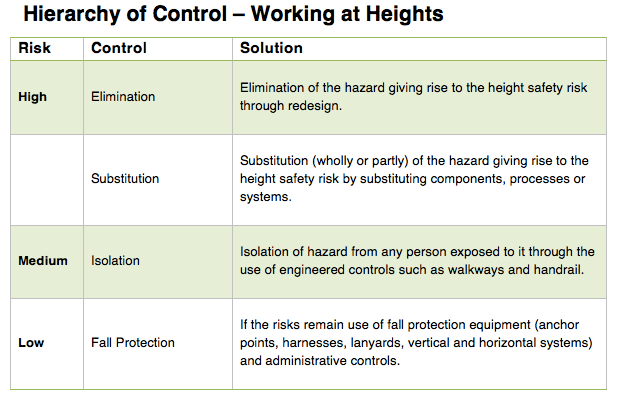Christmas Dispatch Update: Last dispatch 18/12/25 • Dispatch resumes 6/1/26 Shop Now
Menu

Working at Heights Safety: RISSafety’s Australian Compliance Solutions
To protect workers in high-risk environments, such as those working at heights, the Australian Government has legislated mandatory workplace health and safety requirements (Legislation and Regulations).
Any time there is a risk of a worker falling from one level to another, the worker is at significant risk of injury and needs to be protected. Employers have a legal obligation to provide workers with a safe workplace and in turn, workers each have their own legal responsibility to ensure they take reasonably practicable steps to make sure that everyone goes home at the end of the day.
Further guidance for Person(s) Conducting a Business or Undertaking (PCBU) are Code of Practice or Compliance Codes.
These establish and document a practical guide to achieving and maintaining standards of health, safety and welfare. Codes of Practice (COP’s) are developed with consultation with industry bodies and are subject to review to ensure the content remains relevant and appropriately reflects current industry best practice and new equipment, technology and working practices are developed.
A Code of Practice applies to anyone who has a duty of care in the circumstances described in the code. For most cases, an approved code of practice would achieve compliance with the health and safety duties in the Workplace Health and Safety Act. Like Regulations, Codes of Practice deal with specific issues and they do not cover all hazards or risks that may arise.
Codes of Practice are admissible in court proceedings under the Workplace Health and Safety Act and Regulations. Courts may regard a code of practice as evidence of what is known about a hazard, risk or control and may rely on the code of practice when determining what is reasonably practicable in the circumstances in which the Code relates.
SafeWork Australia has developed Code of Practice / Industry Codes to provide practical guidance on how to meet the standards required under the Workplace Health and Safety Act and Regulations.
Understanding your responsibilities is vital to ensure there is consistency across our industry and every workplace.
RISSafety offer services that would re-enforce that a company and its officers exercised due diligence and took all steps reasonably practicable to ensure the health and safety of workers. These services include:
For existing height safety operations – An independent specialist opinion – not dissimilar in concept to the role of an external auditor – on existing operational height safety systems.
For existing or new operations – Complete site audit and risk assessment including the full application of the Hierarchy of Control to minimise the risk to workers.
RISSafety have the in-house capability to design and supply specialist engineering controls such as walkways and guardrails as well as the supply and installation of the correct safety equipment (safety lines, full body harnesses, connectors etc.). This service includes the implementation of any required work method statements and other administrative control.
For ongoing support – The long term maintenance of equipment and systems through regular inspection and recertification as defined in Australian Standards. This extends to the testing and recertification of operators.
Where there are working at height issues, companies who work closely with height safety specialists such as RISSafety can easily mitigate risks to the Company and its officers under Work Health and Safety Regulations and demonstrate the application of their duty of care to its employees.
Contact RISSafety to discuss the unique Strategic Partnership Programme (SPP) to protect those required to work at height in your operations.
Information sheets
Guide to managing risks of industrial rope access systems
Download
Managing The Responsibilities For Working At Heights Activities
Download
Facility Managers Height Safety System Compliance Checklist
Download
Overview of Height Safety Systems Inspection
Download
Managing the Risk of Falls at Workplaces (SafeWork Australia)
Download
Code of Practice: Managing the Risk of Falls at Workplaces (SafeWork NSW)
Download
Best practice guidelines for working at height in New Zealand
Download
Height Safety System Checklist
Download
External links
Safework Australia
Visit website
WorkSafe NZ
Visit website
WorkSafe ACT
Visit website
SafeWork NSW
Visit website
WorkSafe NT
Visit website
WorkSafe QLD
Visit website
SafeWork SA
Visit website
WorkSafe TAS
Visit website
WorkSafe VIC
Visit website
WorkSafe WA
Visit website
Standards Australia
Visit website
SAI Global
Visit website
Working at Heights Association
Visit website
Work, Health & Safety Legislation
Visit website
